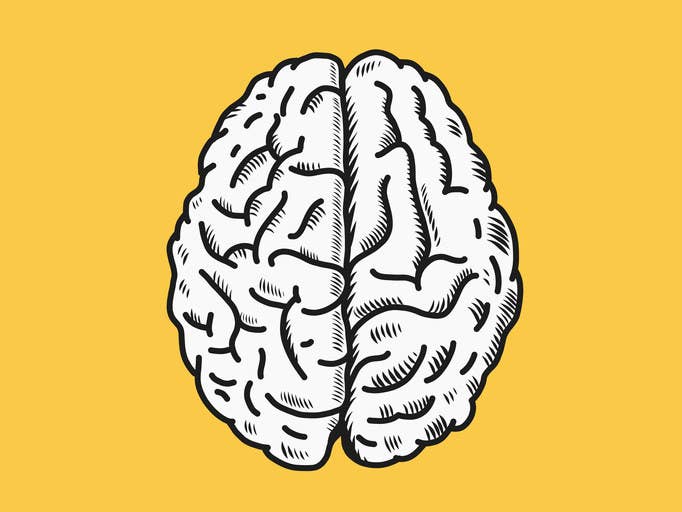You've probably taken a personality test before – either during a job application or because you were bored on the Internet – but what do we really know about these measures?
And what can psychology tell us about the human personality in general?
Researchers from North Carolina this week published a study describing new method of testing personalities using rapid response measurements to try and get a more accurate reading of character traits.
The measurement method still tests across the "Big Five". These are traits that have been accepted in psychology as the universal model for understanding human personality: openness, conscientiousness, extraversion, agreeableness, and neuroticism.
The new method, developed by researchers from North Carolina State University (NCU) and the Center for Creative Leadership, measures participants across the Big Five traits by seeking a binary response to a statement about their personality — either "like me" or "not like me".
The critical point is that participants are only given 2.5 seconds before they get a warning and have to answer the question, which means they have little time to think about how their answer will be perceived.
The faster a person responds to a question, the more heavily that answer is weighted in their final score to get a more accurate reading of their personality.
Dr Adam Meade, a co-author of the study, told BuzzFeed News that traditional personality tests aren't taking advantage of modern technology, and most of the tests we use have been in circulation since the 1960s and just stuck online.
"People are surveyed to death," said Meade. "When is the last time you bought anything online and didn't get a survey? I used to joke that you couldn't use the bathroom without getting asked to complete a survey, then in the Orlando, Florida airport there was a kiosk to take a survey."

"A full personality assessment will usually take 20 to 40 minutes, which is a long time for almost all of us. Job applicants get bored and quit long assessments. We get a response approximately every second so we can get a full measure of personality in six to eight minutes."
The Big Five Rapid Response Measurement (or B5-RRM – personality tests do not have sexy names) was compared to the International Personality Item Pool (IPIP), which is the long questionnaire that most people have taken at some point in their lives, where users have to rate statements about their traits from "very inaccurate" to "very accurate".
The different measuring tactic is useful largely for one reason — it makes it very difficult to lie.
The researchers found that the B5-RRM is just as reliable as traditional tests and could come to replace the 40-minute IPIP survey because it shows more resistance to faking, which is apparently a rampant problem with job applications.
One meta analysis found that prospective employees will lie to increase their apparent openness, extraversion, emotional stability, and conscientiousness when they're given tests during applications.
"Existing personality tests are typically easy to fake...everyone wants to say that they are organised and meet deadlines, that they are kind to strangers etc. It's very easy for people to present themselves as they would like to be seen rather than how they truly are," said Meade.
Meade notes that data mining and artificial intelligence techniques are not adequate enough to wholly understand what somebody is like yet, and personality tests such as the B5-RRM are the best tools we have.
So, where did the idea of personality tests come from?
Throughout the '60s and '70s the concept of personality was fiercely debated by academics and Meade says there were multiple models created in an attempt to pinpoint universal traits that didn't quite fit together.
"For instance, some had 16 traits, some might have 10 traits, some 60. Personality research was all over the map and results from different researchers could not really be combined."
Throughout the 1980s personality psychology was almost entirely trumped by behaviourism and Austrian-born psychologist Walter Mischel, who argued that personality doesn't exist and people's actions are purely dictated by "situational factors".
Associate professor Fiona Barlow, a psychology researcher from the University of Queensland, told BuzzFeed News that psychology has since come to understand that humans do, in fact, have personalities, which are defined by life experience viewed through a "genetic lens".
"Almost thinking of us as like a pre-programmed entity, we then get put in an environment and a million little things happen to us: we interact with our mother, we get bullied at school, we fall in love, we break our leg. Our own interpretation of events and the specific combination of environmental events that happen to us creates the personality."
Barlow notes that while it is not a perfect system, reducing personalities to traits such as those used in the Big Five is a useful concept and "there is a lot of value in being able to quantifiably describe the ways in which people differ".
Currently, the most widely accepted theory of personality among academic researchers is the Big Five, a theory that originated in the '70s and was refined in the '90s from a meta study of thousands of people, as well as character traits that appear most commonly in global languages.
The Big Five was adapted into the IPIP by American psychologist, Lewis Goldberg, which measures extraversion, agreeableness, openness, conscientiousness, and neuroticism on sliding scales.
Professor Nicholas Haslam, a psychology researcher from the University of Melbourne, told BuzzFeed News that these traits came out of decades of research and were settled on because they seem to offer "meaningfully distinct information about a person and they do seem to capture the underlying dimensions of personality better than any other alternative".
"There's some reasons to suspect that they might not be entirely cross-culturally universal, not every analysis done in every country finds the same five factors, but there's a fair degree of consistency across cultural groups, so they seem to be real in some way," said Haslam.
One study from 2013 found that the Big Five model fails to apply to the Tsimane Indigenous people of Bolivia, a phenomenon that the researchers theorised came down to the tight social structure of an isolated community — social success in smaller groups has different personality demands.
Personality tests such as those based on the Big Five have been criticised for their reductionist approach to human personalities, as well as a lack of concern for measurement validity amongst publishers who distribute these tests. But Haslam says they play an important role in understanding human behaviour.
"If tests were as bad as some people make them out to be, if personality tests were just porridge or random noise and self-deception, then they wouldn't predict anything — but they do predict things," he said.
Scores on the Big Five have been shown to predict risk of developing depression and coronary heart disease, career success throughout adulthood, and even life longevity.

Do we need to talk about the Myers-Briggs Personality Test?
Probably not, but here we go anyway.
The Myers-Briggs Type Indicator is the most popular personality assessment tool in the world and places personalities in one of 16 categories based on scores of introversion (I) or extraversion (E), intuitiveness (N) or sensing (S), thinking (T) or feeling (F), and perceiving (P) or judging (J).
The Myers-Briggs Type Indicator is not based on scientific evidence.
"I think it's just not taken seriously by academics – that doesn't mean it's completely useless – that just means it's not based on scientific evidence to do with the structure of personality," said Haslam.
"I think there's a lot of pretty harsh things said about the test (and most of them justified) but that doesn't mean it's not interesting and revealing for people to do it, I think it tells you some interesting things about yourself."
However, Haslam stresses that it does not fall in line with any of the currently-accepted theories in personality psychology.
"The dimensions it says exists don't map precisely onto the dimensions that we do have strong evidence for, like the Big Five."
Haslam also notes that attempting to place personalities into categories, rather than rating traits on a bell curve, is not a realistic way to understand people.
"We've got lots of good evidence that personality should be conceptualised on a set of continuous dimensions, like height or weight, not that you're one type of person or another."
Katharine Briggs and Isabel Briggs Myers (the mother-daughter creators of the Myers-Briggs test) also created the test on the assumption that personalities are stable over time and people will be categorised as a singular type for life. This theory is disputed by evidence that an individual's measurements on traits can change across life spans.

So, do whole personalities change over time?
Well, yes and no.
Haslam believes that misconceptions that state a personality will remain entirely stable over a lifetime were actually perpetuated in part by some early Big Five theorists.
"I think people often have this view – laypeople as well as academics in time gone past – that personality was this sort of fixed entity, that especially by the time you hit 30 you better just get used to the wrinkles because they're not going to go away."
Haslam says this debate hinges on how you define "change", and that it is actually more accurate to say that there are predictable patterns of personality change or maturity over a lifetime.
"You can talk about personality being stable in the sense that knowing that you're high on some trait at one age predicts pretty strongly that you'll be high compared to your peers at a later stage, and that's certainly true."
Barlow says that there is increasing evidence to suggest subtle changes in personality occur over the course of a lifetime, but there can also be large marked changes when big life events – such as trauma – occur, which can alter traits significantly.
Cool, so why are personality tests even useful?
The B5-RRM was primarily designed to be used in employment settings, so that job applicants can't alter their personality results to fit a particular role, but there are uses for personality tests beyond job trials.
Haslam believes that the predictive power of personality tests to assess vulnerability to mental illness such as depression and stress means that these Big Five tests should be used in clinical psychology settings to structure treatment.
Beyond these industrial and clinical applications, Barlow believes that personality assessments can also be quite personally reassuring.
"I think knowing that we're the type of person who's prone to depression, for example, just knowing that and working around that can be really healing and beneficial.
"My argument would be that there's a huge relief in being able to accept yourself for who you are and work on improving yourself with a sensible knowledge of general tendencies that you have."
